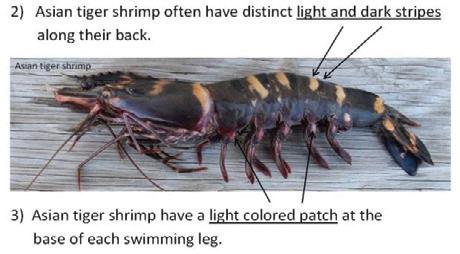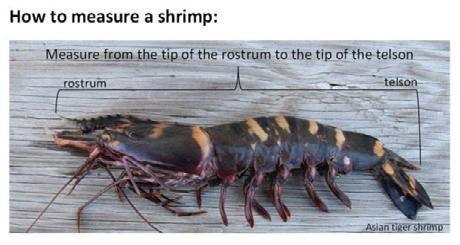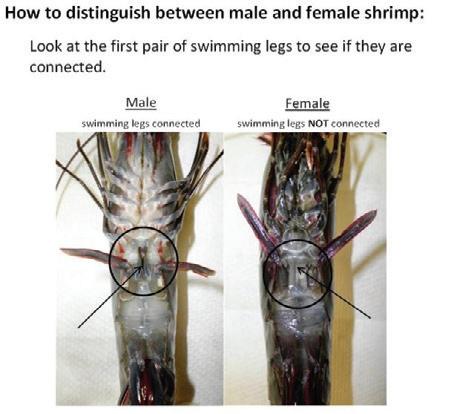
2 minute read
Invasive Asian Tiger Shrimp
Asian Tiger Shrimp on Rise
The GADNR, NOAA and the U.S. Geological Survey (USGS) are looking into an invasive species being spotted more frequently in coastal waters.
Advertisement
Asian tiger shrimp are native to Indo-Pacific, Asian, and Australian waters, but are now found along the southeast and Gulf coasts of the United States. While small numbers of this invasive species have been reported in U.S. waters for over a decade, sightings have notably increased over the past few years.
The USGS and NOAA are now working with state agencies from North Carolina to Texas to look into whether these shrimp carry disease, compete for the same food sources, or prey directly on native shrimp. An investigation is also underway to determine how this transplanted species reached U.S. waters, and what is behind the recent rise in sightings of the non-native shrimp.
Scientists have not yet officially deemed the Asian tiger shrimp "established" in U.S. waters, and no one is certain what triggered the recent round of increased sightings. The non-native shrimp species may have escaped from aquaculture facilities; however, there are no known Asian tiger shrimp farms presently in operation in the U.S. Ballast water from ships has been suggested as another pathway. Another possibility is that they are arriving on ocean currents from wild populations in the Caribbean or even as far away as Gambia, a west African nation where they are known to be established.
With so many alternative theories about where these shrimp are coming from and only a handful of juveniles reported, it is hard for scientists to conclude whether they are breeding or simply being carried in by currents.
To look for answers, scientists are examining shrimp collected from the Gulf and Atlantic coasts to look for subtle differences in their DNA, information which could offer valuable clues to their origins. This is the first look at the genetics of wild caught Asian tiger shrimp populations found in this part of the U.S. and may shed light on whether there are multiple sources.
NOAA scientists are also launching a research effort to understand more about the biology of these shrimp and how they may affect the ecology of native fisheries and coastal ecosystems. As with all non-native species, there are concerns over the potential for novel avenues of disease transmission and competition with native shrimp stocks, especially given the high growth rates and spawning rates compared with other species.
To share information on these shrimp if you catch them, visit: bit.ly/ invasive_report



Report Asian tiger shrimp and other invasive species you catch in coastal Ga. waters: bit.ly/invasive_report
Images provided by GADNR Data compiled from GADNR and NOAA








